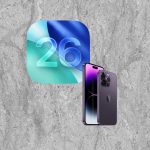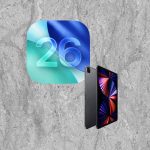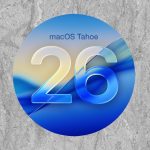Safari, Chrome and Firefox are the three most popular bowsers on Mac and iOS.

From 1998 until the early 2000s, Internet Explorer was the default browser on Mac computers, following a 1997 agreement between Apple and Microsoft. Microsoft created a version of Internet Explorer specifically for Macs, which was initially praised for its speed and seamless integration with Mac OS. However, as Apple began developing its own browser, the pace of updates to Internet Explorer slowed. In 2003, Apple launched Safari, which was built on the open-source WebKit engine and emphasized speed, adherence to web standards, and a minimalist design. Safari quickly became the default browser on Mac OS X, replacing Internet Explorer, which was officially phased out for Mac in 2005. This shift marked a pivotal change in Apple’s software approach, highlighting its growing focus on developing proprietary software and maintaining greater control over its ecosystem.
TABLE OF CONTENTS
What are the key features of Safari on Mac and iOS?
Safari on both Mac and iOS is engineered for speed, energy efficiency, and seamless integration with Apple’s ecosystem. Here are some standout features:
Performance & Efficiency: Safari is tailored to work optimally with Apple devices, providing quick page loading times and conserving battery life, which is especially useful for laptops and mobile devices.
Privacy & Security: With features like Intelligent Tracking Prevention, Privacy Report, and built-in protections against pop-ups and malicious sites, Safari helps safeguard users from unwanted tracking and potential security threats.
iCloud Sync: Safari syncs bookmarks, tabs, browsing history, and the Reading List across all Apple devices using iCloud, ensuring a smooth transition between your Mac, iPhone, and iPad.
Reader Mode: This mode eliminates ads and other distractions, presenting articles in a clean, readable format for a better reading experience.
Extensions & Customization: Users can add extensions from the App Store on both Mac and iOS. iOS 15 and macOS Monterey (and later versions) offer enhanced support for web extensions and customizable start pages.
Tab Management: Safari’s tab groups, tab previews, and compact layout on mobile devices help users stay organized, whether they are using a large screen or a smaller one.
Security Features: Safari offers advanced security with passkeys (replacing traditional passwords with biometric logins), integration with Apple Pay for secure online transactions, and automatic updates to protect against emerging vulnerabilities.
Translation & Siri Suggestions: Safari can translate entire web pages and integrates with Siri to suggest relevant content based on your browsing activity.
What are the key features of Chrome on Mac and iOS?
Google Chrome on Mac and iOS is known for its speed, cross-platform syncing, and seamless integration with Google services. Key features include:
Cross-Platform Syncing: With a Google account, Chrome synchronizes bookmarks, history, passwords, tabs, and extensions across Mac, iOS, Windows, Android, and Linux, making it simple to transition between devices.
Speed & Performance: Chrome is engineered for fast browsing and quick load times, utilizing the V8 JavaScript engine and the Blink rendering engine on Mac. On iOS, it must use WebKit (like Safari), but it maintains a consistent interface and feature set.
Extensions (Mac Only): Chrome on Mac offers access to a wide array of extensions and themes from the Chrome Web Store, allowing for extensive customization.
Google Integration: Chrome integrates closely with Google services, such as Gmail, Google Docs, and Google Translate. It also offers voice search and personalized content through the Google Discover feed.
Tab Management: Chrome features tab grouping, tab search, the ability to pin or mute tabs, and a visual tab grid on mobile devices for easier navigation.
Security & Updates: Chrome includes built-in protections like Safe Browsing, sandboxing, and automatic updates to guard against malware and phishing threats. It also provides enhanced password management and alerts for data breaches.
Data Saver (Lite Mode): On mobile, Chrome can reduce data usage by compressing web pages, which is helpful in low-bandwidth situations (though this feature is being phased out).
Reading List & Offline Mode: Chrome enables users to save articles to a Reading List and access them offline, making it convenient for travel or unreliable connections.
What are the key features of Firefox on Mac and iOS?
Firefox on Mac and iOS emphasizes privacy, personalization, and open-source values, providing a distinct browsing experience compared to Safari and Chrome. Here are its key features:
Enhanced Privacy Controls: Firefox’s Enhanced Tracking Protection blocks third-party trackers, social media trackers, cryptominers, and fingerprinting scripts by default. On Mac, it also offers the Facebook Container, which isolates Facebook activity from other browsing data.
Sync Across Devices: With Firefox Sync, users can synchronize bookmarks, tabs, passwords, and browsing history between Mac, iPhone, iPad, Android, and other platforms using a Firefox account.
Customization (Mac Only): Firefox for Mac offers extensive customization, including themes, toolbar adjustments, and a wide range of add-ons and extensions available through Mozilla’s marketplace.
Private Browsing Mode: Firefox’s private browsing mode ensures that no history is saved, automatically blocks trackers, and deletes cookies once the session ends.
Reader View: Similar to Safari, Firefox features a Reader View that simplifies webpages for a clean, distraction-free reading experience.
Pocket Integration: Firefox integrates with Pocket, a Mozilla-owned service, enabling users to save and discover articles directly within the browser.
Performance Enhancements: Thanks to its Quantum engine, Firefox delivers improved speed, responsiveness, and efficient memory use, particularly for users who tend to keep multiple tabs open.
Open Source & Independent: Developed by Mozilla, a non-profit organization, Firefox stands apart from major tech companies, prioritizing transparency, privacy, and user control.
Biometric Security on iOS: Firefox for iPhone and iPad supports Face ID and Touch ID to secure passwords and private browsing sessions.
How do Safari, Chrome and Firefox on Mac and iOS compare to each other?
Here’s a comparison of Safari, Chrome, and Firefox on Mac and iOS, highlighting key features and user experience:
| Feature | Safari | Chrome | Firefox |
|---|---|---|---|
| Developer | Apple | Mozilla (non-profit) | |
| Default on Apple Devices | ✅ Yes | ❌ No | ❌ No |
| Rendering Engine (Mac) | WebKit | Blink | Gecko |
| Rendering Engine (iOS) | WebKit (required by Apple for all browsers) | WebKit (required by Apple for all browsers) | WebKit (required by Apple for all browsers) |
| Speed & Performance | Excellent, optimized for Apple hardware | Fast, especially with Google services | Fast, improved with Quantum engine |
| Battery Efficiency (Mac) | ✅ Best in class | ❌ Higher battery usage | ⚠️ Moderate |
| Privacy & Tracking Protection | ✅ Built-in (Intelligent Tracking Prevention) | ⚠️ Basic, some tracking allowed | ✅ Strong default protections |
| Cross-Platform Sync | ✅ Apple devices via iCloud | ✅ Across all platforms via Google | ✅ Across all platforms via Firefox Sync |
| Extension Support (Mac) | ✅ (via App Store, growing support) | ✅ Vast Chrome Web Store | ✅ Wide support via Mozilla Add-ons |
| Extension Support (iOS) | ✅ Limited but growing (iOS 15+) | ⚠️ Limited | ⚠️ Limited |
| Tab Management | Tab groups, compact layout | Tab groups, tab search | Tab groups (Collections), container tabs (Mac) |
| Private Browsing Mode | Basic, deletes history | Basic, deletes history | ✅ Deletes history + blocks trackers |
| Reading Mode | ✅ Yes | ❌ No (requires extension) | ✅ Yes |
| Customization (Mac) | Minimal | Moderate | ✅ Extensive |
| Open Source | ❌ No | ❌ No | ✅ Yes |
Summary:
-
Safari is the top choice for Apple users who value long battery life, tight integration with Apple devices, and strong privacy features.
-
Chrome is ideal for those who are deeply integrated into the Google ecosystem and need seamless sync across multiple devices and platforms.
-
Firefox stands out for privacy-focused users and those who prefer open-source software with plenty of customization options.
What about using resources such as RAM and storage?
Resource Usage: Safari vs. Chrome vs. Firefox on Mac
| Aspect | Safari | Chrome | Firefox |
|---|---|---|---|
| RAM Usage | ✅ Low to moderate – highly efficient, with features like tab suspension and tight system integration | ❌ High – notorious for significant memory consumption, especially with many tabs and extensions | ⚠️ Moderate – generally better than Chrome, but can spike with too many active tabs |
| CPU Usage | ✅ Low – optimized for macOS hardware | ❌ High – can spike with media-heavy or script-intensive sites | ⚠️ Moderate – efficient, but less optimized for Mac compared to Safari |
| App Size (Storage) | ✅ Lightest – small installation footprint and minimal system impact | ❌ Heavy – larger install size, with extra cache and background processes | ⚠️ Medium – smaller than Chrome, but still larger than Safari |
| Disk Cache Usage | ✅ Conservative – managed by macOS | ❌ Aggressive – stores extensive site data to speed up loading, can become bloated | ⚠️ Moderate – customizable through settings |
| Tab Management Impact | ✅ Efficiently suspends inactive tabs | ❌ Keeps tabs active, especially with extensions | ✅ Utilizes tab unloading and improved memory management since the Quantum update |
On iOS:
Since Apple requires all browsers (including Chrome and Firefox) to use Safari’s WebKit engine under the hood, RAM and CPU usage are essentially the same across all three browsers on iOS.
The primary differences on iOS lie in interface, features, and syncing, rather than raw performance or resource consumption.
What other major browsers exist for Mac and iOS? What are their key features and benefits?
Aside from Safari, Chrome, and Firefox, there are several other notable browsers available for Mac and iOS, each offering distinct features that cater to various needs like privacy, performance, security, and customization. Here’s a quick look at some of the most prominent options:
🌐 1. Microsoft Edge
-
Engine: Chromium (Blink on Mac, WebKit on iOS)
-
Key Features:
-
Optimized for modern web standards, ensuring smooth performance
-
Vertical tabs and Collections for better content organization
-
Built-in tools for coupon and price comparison
-
Read Aloud feature for accessibility
-
Strict tracking prevention modes for enhanced privacy
-
Syncs across Windows, macOS, iOS, and Android
-
-
Best For: Users looking for a fast, Chromium-based browser with integrated productivity tools and Microsoft ecosystem support.
🛡️ 2. Brave
-
Engine: Chromium (Blink on Mac, WebKit on iOS)
-
Key Features:
-
Aggressive ad and tracker blocking by default, ensuring private browsing
-
Built-in Tor private browsing feature (Mac only)
-
Brave Rewards: opt-in crypto-based ad model (BAT tokens)
-
Speed optimized due to reduced tracking and ads
-
-
Best For: Privacy-conscious users seeking fast, ad-free browsing with minimal setup and no extra extensions.
🧭 3. DuckDuckGo Browser (iOS-only for now, Mac in beta)
-
Engine: WebKit (iOS), custom engine on Mac in beta
-
Key Features:
-
Built-in tracker blocking and encryption upgrades
-
Fire Button to instantly clear all browsing data
-
Uses DuckDuckGo Search as the default, focusing on privacy
-
-
Best For: Users who prefer a simple, privacy-first browsing experience with minimal hassle.
🌈 4. Opera
-
Engine: Chromium (Blink on Mac, WebKit on iOS)
-
Key Features:
-
Free built-in VPN for enhanced security
-
Workspaces and sidebar for multi-tab and app organization
-
Battery saver mode for prolonged usage
-
Integrated messenger and social media tools (Mac only)
-
-
Best For: Power users who want an all-in-one browser with lots of built-in features and tools.
💡 5. Vivaldi (Mac only, not on iOS)
-
Engine: Chromium (Blink)
-
Key Features:
-
Highly customizable UI, including adjustable keyboard shortcuts
-
Features like tab stacking, split screen, notes, and command palette
-
Privacy-focused with built-in ad and tracker blocking
-
-
Best For: Tinkerers and advanced users who want full control over their browsing experience.
🔐 6. Orion (by Kagi) – Mac & iOS (in testing)
-
Engine: WebKit
-
Key Features:
-
Supports Chrome and Firefox extensions on a WebKit engine (a unique feature!)
-
Zero telemetry, privacy-first approach
-
Lightning-fast performance with a native Mac feel
-
-
Best For: Apple users who desire Safari’s efficiency combined with the flexibility of Chrome/Firefox extensions.
✅ Summary:
| Browser | Known For | Best For |
|---|---|---|
| Safari | Speed, battery life, system integration | Apple users who prioritize efficiency & privacy |
| Chrome | Google services, speed, extensions | Cross-platform users in the Google ecosystem |
| Firefox | Privacy, open-source, customization | Privacy-conscious and open-web supporters |
| Edge | Productivity, Microsoft integration | Microsoft users or multi-device workflows |
| Brave | Built-in ad blocking, privacy | Privacy-first users who want speed and ad-free browsing |
| DuckDuckGo | Simplicity, private search | Minimalists valuing instant privacy |
| Opera | VPN, integrated tools, social apps | All-in-one users and frequent travelers |
| Vivaldi | Deep customization, power features | Tech-savvy users and tab hoarders |
| Orion | Fast WebKit + extension support | Mac users wanting privacy + Chrome extensions |
Choosing a browser ultimately depends on your priorities and browsing habits—whether it’s speed, privacy, customization, or seamless integration with other services.
How do I decide which browser to use? Is there any reason I should have more than one?
✅ How to Decide Which Browser to Use
Here are some key questions to help you choose the best browser for your needs:
-
Are you deep in an ecosystem?
-
Apple user with all Apple devices? → ✅ Safari is ideal for battery life, Handoff, and iCloud sync.
-
Google-heavy workflow (Gmail, Docs, etc.)? → ✅ Chrome offers the best integration and sync with Google services.
-
Microsoft Office or OneDrive user? → ✅ Edge works seamlessly with Windows/Microsoft tools.
-
-
Do you care about privacy and data tracking?
-
✅ Firefox, Brave, and DuckDuckGo are the most privacy-respecting browsers.
-
❌ Chrome often gets criticized for extensive data collection tied to your Google account.
-
-
Do you use a lot of extensions or web apps?
-
✅ Chrome, Edge, and Firefox (Mac only) support a wide range of extensions and web apps.
-
✅ Orion (Mac) supports both Chrome and Firefox extensions while maintaining Safari-like performance.
-
-
Do you multitask or work with lots of tabs?
-
✅ Vivaldi and Firefox (with container tabs) are excellent for managing multiple tabs.
-
✅ Safari’s tab groups make tab management easy and sync across all your Apple devices.
-
-
Do you want something lightweight and fast?
-
✅ Safari is the most efficient browser on Mac and iOS.
-
✅ Brave speeds up browsing by stripping out ads and trackers.
-
⚠️ Chrome is fast but can be heavy on RAM and battery.
-
🧠 Why You Might Want More Than One Browser
Using multiple browsers can be an effective strategy! Here’s why:
| Scenario | Recommended Approach |
|---|---|
| Work vs. Personal | Use separate browsers to avoid cross-contamination of logins, cookies, etc. (e.g., Safarifor personal, Firefox for work) |
| Privacy Browsing | Use Brave or Firefox for privacy-focused sessions, and another browser for everyday use |
| Testing Web Design or Compatibility | Use Safari, Chrome, and Firefox to see how websites behave across different browsers |
| Logged into multiple accounts | Use different browsers for each account, or take advantage of Firefox’s container tabs for keeping sessions separate |
💡 Pro Tip:
Browsers like Arc or Sidekick are designed specifically for multitasking and web app workflows. If you’re heavily into browser-based productivity, they’re worth checking out!
Where do I get each of the browsers listed above?
Here’s where you can download the major browsers for Mac and iOS, ensuring you’re getting the latest and safest version:
🖥️ For Mac (macOS)
| Browser | Download Link |
|---|---|
| Safari | ✅ Built-in with macOS — updated via System Settings > Software Update |
| Chrome | Download Chrome for Mac |
| Firefox | Download Firefox for Mac |
| Microsoft Edge | Download Edge for Mac |
| Brave | Download Brave for Mac |
| Opera | Download Opera for Mac |
| Vivaldi | Download Vivaldi for Mac |
| Orion | Download Orion (beta) |
| DuckDuckGo | 🔜 Currently iOS only (Mac version in limited beta) |
📱 For iOS (iPhone/iPad)
All iOS browsers must be downloaded via the App Store:
| Browser | App Store Link |
|---|---|
| Safari | ✅ Built-in on iOS (cannot be deleted) |
| Chrome | Chrome on App Store |
| Firefox | Firefox on App Store |
| Microsoft Edge | Edge on App Store |
| Brave | Brave on App Store |
| Opera | Opera on App Store |
| DuckDuckGo | DuckDuckGo on App Store |
| Orion | Orion on TestFlight (beta) |
🛡️ Important: Always download browsers from their official websites or the App Store to avoid tampered versions or malware.
Arc or Sidekick.
Arc and Sidekick are newer, experimental browsers designed to enhance productivity, focus, and web-based workflows. While they are not as mainstream as Chrome or Safari, they’re gaining popularity, especially among creatives, developers, and remote teams. Here’s a closer look at each:
🌈 Arc Browser (by The Browser Company)
-
Platform: macOS (Windows in beta)
-
Engine: Chromium (Blink)
-
Download: Arc Browser
🔑 Key Features:
-
Sidebar-based interface with workspaces, pinned tabs, and folders.
-
“Spaces” for separating projects, work, or personal browsing.
-
Focus Mode and split view for multitasking.
-
Command Bar (similar to Spotlight) for quick navigation and actions.
-
Built-in screenshot, easel (whiteboard), and note-taking tools.
-
Minimal UI with auto-hiding address bar to reduce clutter.
✅ Best For:
-
Creatives, developers, and productivity-focused users.
-
People juggling multiple workstreams or projects/tabs.
⚡ Sidekick Browser
-
Platform: macOS, Windows, Linux
-
Engine: Chromium (Blink)
-
Download: Sidekick Browser
🔑 Key Features:
-
App Sidebar with quick access to Gmail, Slack, Notion, and other web apps.
-
Session isolation and account switching (separate work/personal logins).
-
Built-in ad blocker and distraction blocker.
-
Tab suspension and memory optimization for better performance.
-
AI-powered search for tabs and documents.
✅ Best For:
-
Remote workers and startup teams.
-
Power users who rely on many web-based productivity apps.
-
Those who want fast tab management and workspace separation.
⚖️ Arc vs. Sidekick – Quick Comparison:
| Feature | Arc | Sidekick |
|---|---|---|
| UI Style | Creative, minimal, design-first | Business-like, web app focused |
| Best for | Designers, devs, creatives | Teams, startup workers, multitaskers |
| Account Isolation | Spaces (less rigid) | Strong session isolation |
| Tab Management | Sidebar + Spaces | Sidebar + App Sessions |
| Customization | High (notes, easels, themes) | Moderate (focused on utility) |
| Mobile App | ❌ Not yet | ❌ Not yet |
🧠 Should You Try One?
If you:
-
Use the web for most of your work.
-
Regularly switch between tools like Gmail, Notion, Figma, etc.
-
Juggle work and personal logins or want cleaner tab organization.
Then Arc or Sidekick could dramatically improve your workflow, offering streamlined organization and a more focused browsing experience.
What is Safari Technology Preview?
Safari Technology Preview is a special version of Apple’s Safari browser designed for developers and advanced users to test upcoming web features and improvements before they are included in the official, stable release. It allows for early access to new web technologies and a platform for experimentation, bug reporting, and feedback.
🔑 Key Features of Safari Technology Preview:
1. Early Access to New Features:
-
It provides a sneak peek at upcoming features and web technologies that will eventually be integrated into the stable Safari release.
-
Features include updates to Safari’s WebKit engine (its rendering engine), new web standards, performance upgrades, and experimental APIs for HTML, CSS, JavaScript, etc.
2. Frequent Updates:
-
Safari Technology Preview is updated far more frequently than the stable version of Safari—usually on a weekly or bi-weekly basis.
-
Updates may include bug fixes, stability improvements, and new experimental features being tested by Apple.
3. Separate from Stable Safari:
-
It doesn’t interfere with your regular Safari browser; you can run both versions side by side without any issues.
-
It’s a completely separate app, allowing you to test new features without disrupting your main browsing experience.
4. WebKit and Browser Engine Testing:
-
Developers can use Safari Technology Preview to test their websites against the latest WebKit builds before those changes appear in the next official Safari release.
-
Aimed at web developers, designers, and QA testers, it allows them to ensure their sites and apps work well with the latest web standards.
5. Feedback Mechanism:
-
Apple encourages users to provide feedback and report bugs encountered while using Safari Technology Preview.
-
This helps improve web technologies, browser performance, and the overall user experience in future updates.
6. Privacy and Security Testing:
-
Developers can test new security and privacy features in Safari Technology Preview, preparing their apps or websites for future updates to Safari’s security policies and functionality.
📥 How to Download Safari Technology Preview:
You can download Safari Technology Preview for macOS directly from the Apple Developer website or through this link:
Download Safari Technology Preview
It’s free to download and use, but you’ll need an Apple Developer account (which can be a free account) to access the download.
🧰 When to Use Safari Technology Preview:
-
Web Developers and Designers: If you’re building websites or web apps, this version of Safari is crucial for testing your work against the latest web standards and rendering engines.
-
Early Adopters: If you enjoy experimenting with cutting-edge features and want to stay ahead of the curve in web technologies, Safari Technology Preview is the perfect fit.
-
Quality Assurance (QA): If you’re responsible for testing cross-browser compatibility for websites or apps, this version of Safari lets you check compatibility with new web features.
⚠️ Limitations:
-
Stability: Since it’s a preview, it may not be as stable as the main Safari browser. Expect bugs, crashes, or features that might not work as expected.
-
Not for General Browsing: While it’s fully functional, Safari Technology Preview is intended for testing and development. If you’re looking for a stable browsing experience, stick with the regular version of Safari.
Safari Technology Preview is a great tool for developers and early adopters, allowing them to explore and provide feedback on future web technologies and updates, but it’s not ideal for everyday, general browsing.



- What is the iPhone Air?
- What does it mean when an external hard drive format is for Mac or for Windows?
- Designed by Apple in California. Loved in Colorado.
- How do I migrate my iTunes and App Store purchases to another Apple Account.
- Boulder Mac Repair is currently purchasing Apple Devices for resale.
- What’s new in iOS 26?
- What’s new in iPadOS 26?
- What’s new in macOS 26 Tahoe?









